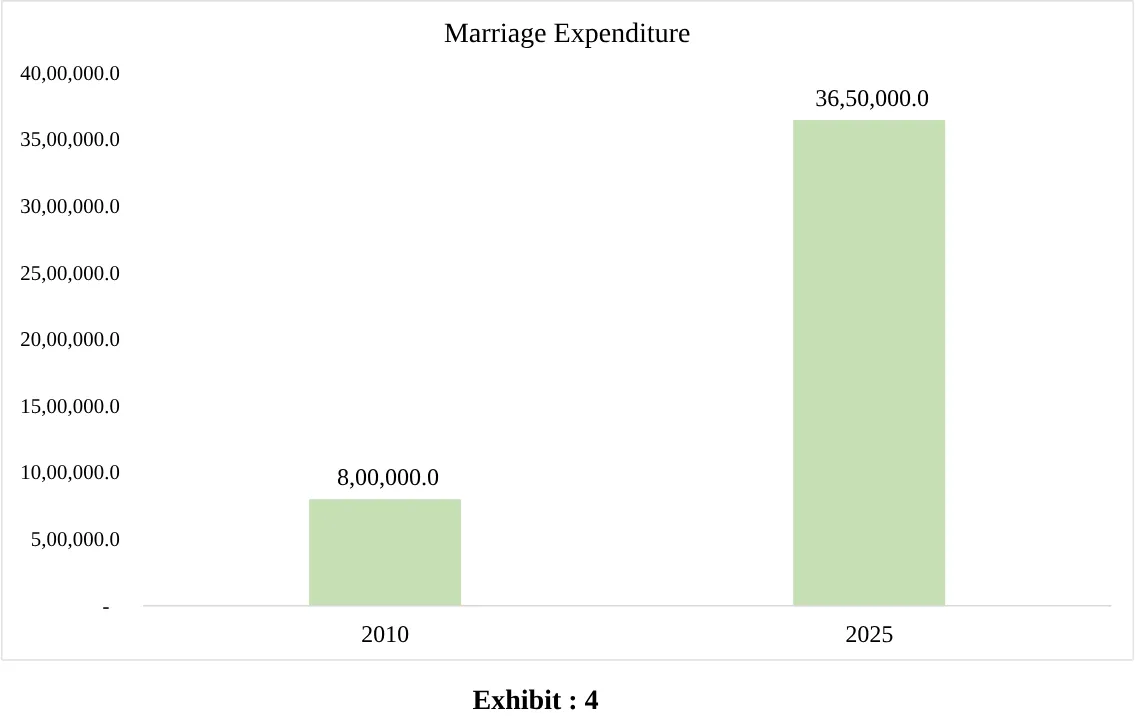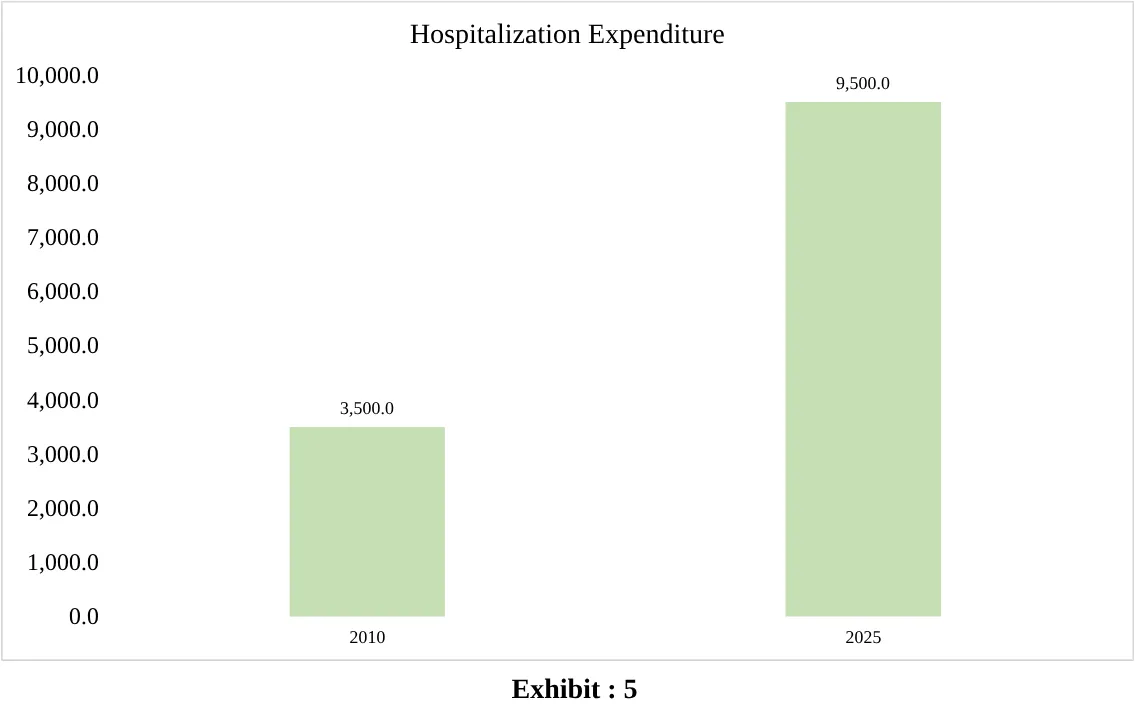This report highlights the financial pressures increasingly faced by India’s middle-class families, focusing on three critical sectors: education, healthcare, and marriage. These areas are central to family life and well-being, and their escalating costs are a growing concern.
Education Sector: Rising Academic Costs
Education has always been a cornerstone of progress for Indian families, especially for the middle class, who often prioritize academic achievement as a path to upward mobility. However, costs in this sector have surged significantly over the past decade. Refer Exhibit 2 &3
- Undergraduate programs have grown at a CAGR of 6.75%.
- Postgraduate programs have seen a CAGR of 6.04%.
These figures reflect consistent annual increases in tuition and associated costs, making quality higher education less affordable
without significant financial planning or reliance on student loans.
*UG B.Tech Course from Private University
*PG MBA Course from Private University
Marriage Expenses: A Growing Cultural Burden
Marriage continues to hold immense social and cultural value in India, especially among middle-class families. However, it has
increasingly become a financial challenge. Refer Exhibit 4
Over the last decade, the cost of organizing a wedding has increased at a CAGR of 10.65%.
This sharp rise includes expenses for venues, catering, decorations, and gifts. With growing societal expectations and the influence of
social media on wedding standards, families often feel pressured to host lavish events. This has led many to dip into lifelong savings or
take out personal loans, posing risks to financial security.
Healthcare: Skyrocketing Hospitalization Costs
Healthcare is another sector where the middle class is feeling the pinch. Even basic treatments have become increasingly expensive. Refer Exhibit 5
Hospitalization for common illnesses like flu and fever now typically costs ₹8,000 to ₹10,000 in private hospitals.
The sector has experienced a CAGR of 6.88% in hospitalization expenses. This rise reflects growing consultation charges, diagnostic fees, and medical inflation. Without adequate insurance, a single medical emergency can destabilize a family’s financial planning. The trend highlights the importance of expanding affordable health insurance coverage.








